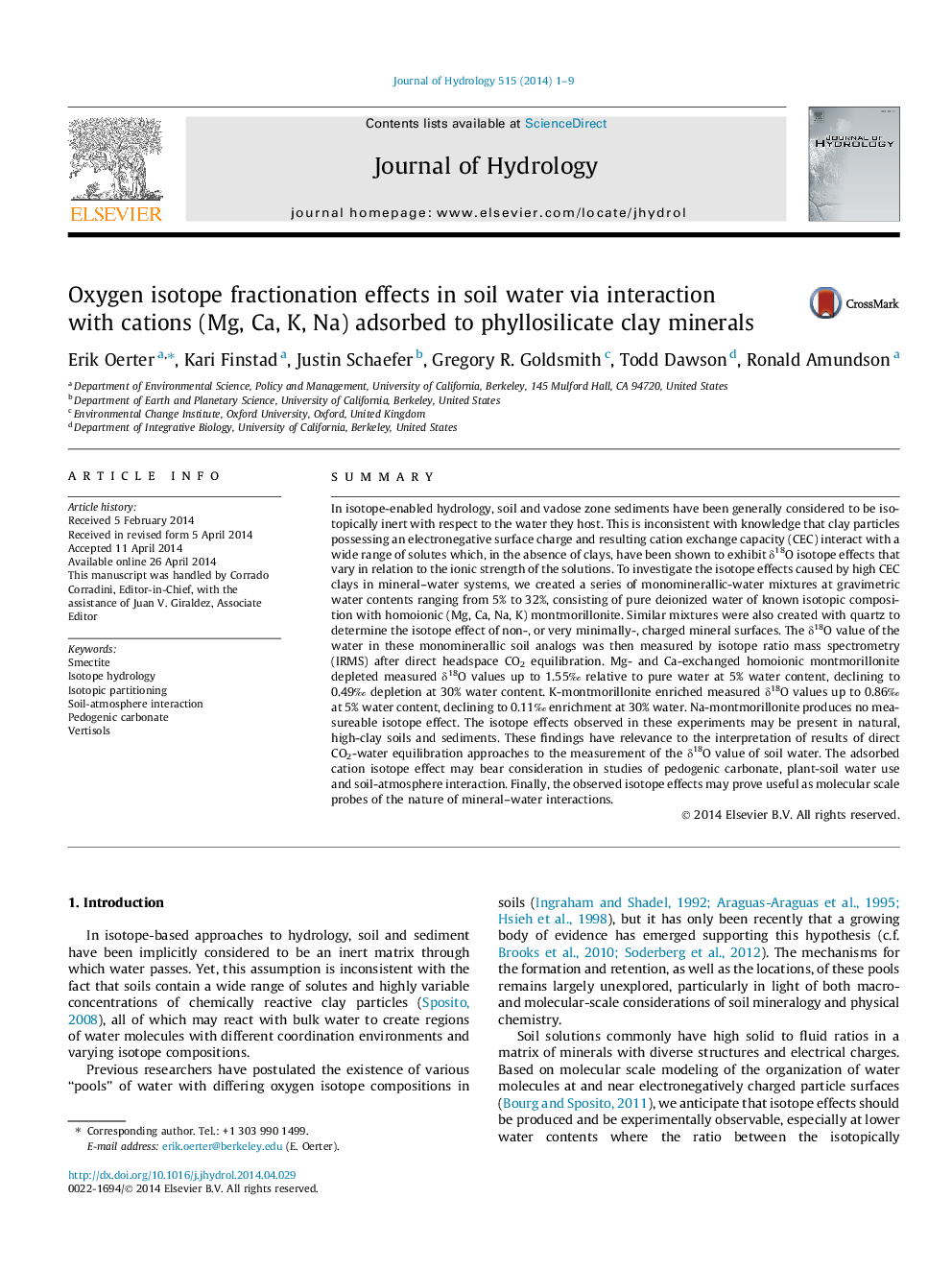| Article ID | Journal | Published Year | Pages | File Type |
|---|---|---|---|---|
| 6412818 | Journal of Hydrology | 2014 | 9 Pages |
â¢Smectite clays in soil are not isotopically inert with respect to the soil water.â¢Mg, Ca, or K adsorbed to smectite fractionate the bulk water in clay-water mixtures.â¢Isotopic measurement by direct equilibration may reflect only portions of soil water.â¢This isotope effect may be present in natural, high-clay soils and sediments.â¢These findings are relevant to pedomineralogy, ecohydrology, and climatology.
SummaryIn isotope-enabled hydrology, soil and vadose zone sediments have been generally considered to be isotopically inert with respect to the water they host. This is inconsistent with knowledge that clay particles possessing an electronegative surface charge and resulting cation exchange capacity (CEC) interact with a wide range of solutes which, in the absence of clays, have been shown to exhibit δ18O isotope effects that vary in relation to the ionic strength of the solutions. To investigate the isotope effects caused by high CEC clays in mineral-water systems, we created a series of monominerallic-water mixtures at gravimetric water contents ranging from 5% to 32%, consisting of pure deionized water of known isotopic composition with homoionic (Mg, Ca, Na, K) montmorillonite. Similar mixtures were also created with quartz to determine the isotope effect of non-, or very minimally-, charged mineral surfaces. The δ18O value of the water in these monominerallic soil analogs was then measured by isotope ratio mass spectrometry (IRMS) after direct headspace CO2 equilibration. Mg- and Ca-exchanged homoionic montmorillonite depleted measured δ18O values up to 1.55Ⱐrelative to pure water at 5% water content, declining to 0.49Ⱐdepletion at 30% water content. K-montmorillonite enriched measured δ18O values up to 0.86Ⱐat 5% water content, declining to 0.11Ⱐenrichment at 30% water. Na-montmorillonite produces no measureable isotope effect. The isotope effects observed in these experiments may be present in natural, high-clay soils and sediments. These findings have relevance to the interpretation of results of direct CO2-water equilibration approaches to the measurement of the δ18O value of soil water. The adsorbed cation isotope effect may bear consideration in studies of pedogenic carbonate, plant-soil water use and soil-atmosphere interaction. Finally, the observed isotope effects may prove useful as molecular scale probes of the nature of mineral-water interactions.
